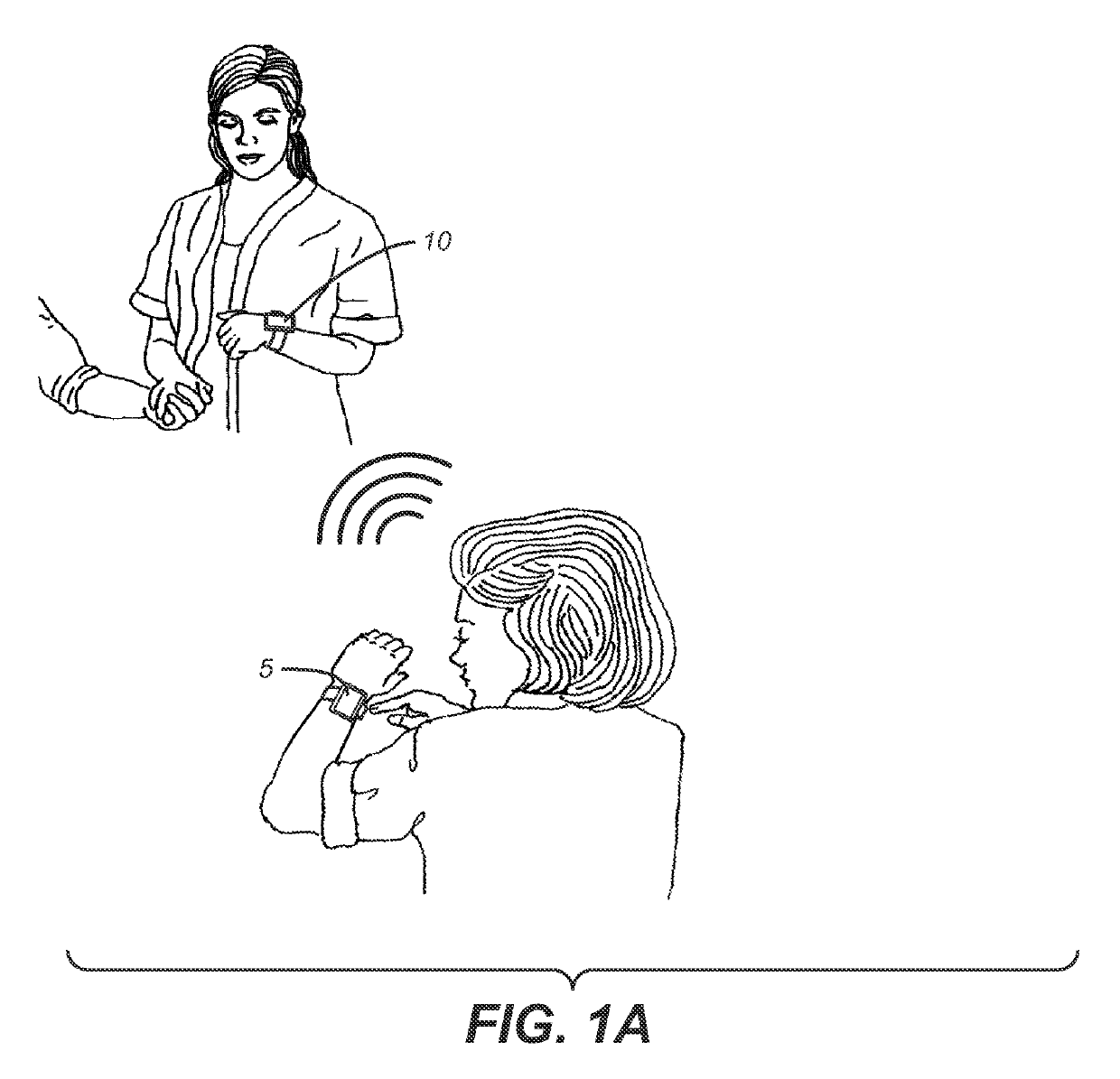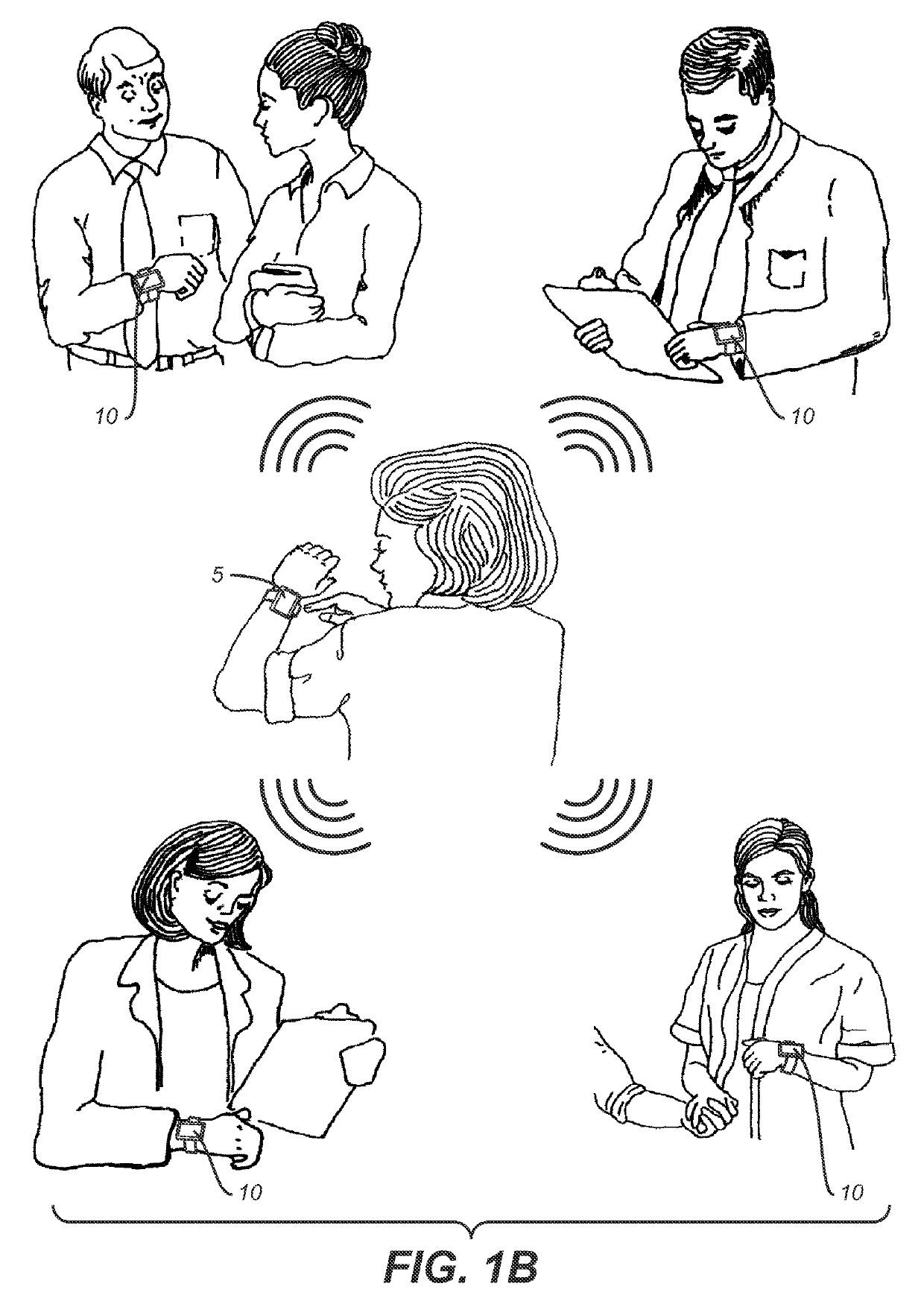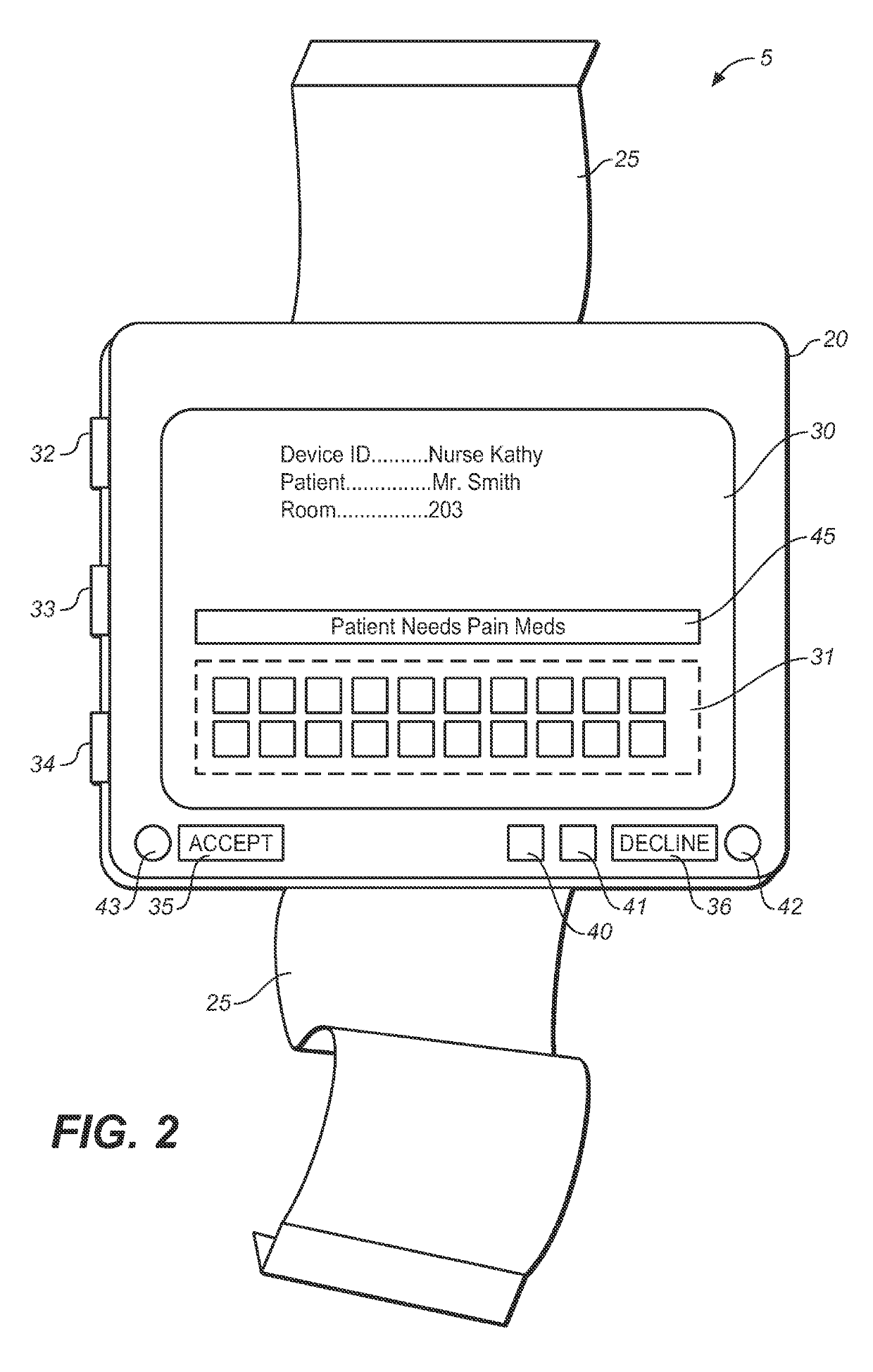Portable alert communication system
a communication system and alert technology, applied in the field of alert communication systems, can solve problems such as ringing telephonic devices, affecting the current patient, and affecting the patient's sleep, and achieve the effects of reducing the risk of disruption, reducing the risk of interruption, and reducing the patient's comfort level
- Summary
- Abstract
- Description
- Claims
- Application Information
AI Technical Summary
Benefits of technology
Problems solved by technology
Method used
Image
Examples
Embodiment Construction
Healthcare Facility
[0032]FIG. 1A pictorially illustrates a preferred embodiment of a portable alert communication system for use in a healthcare facility, like a hospital, medical clinic, or nursing home. The portable alert communication system is comprised of a local display device 5 that can be worn and used by a healthcare administrator to communicate an alert to a healthcare provider who is wearing a remote display device 10, concerning the healthcare or safety of a patient. Alternatively, the local display device 5 can be a display device that is not worn on the wrist of the health care administrator; for example, the local display device 5 can be a desktop display device having the same functionality as the local display device 5. The healthcare administrator can typically be a person trained in the management of providing healthcare services to patients within a healthcare facility, and the healthcare provider can normally be a doctor, nurse or patient care technician. Prefer...
PUM
 Login to View More
Login to View More Abstract
Description
Claims
Application Information
 Login to View More
Login to View More - R&D
- Intellectual Property
- Life Sciences
- Materials
- Tech Scout
- Unparalleled Data Quality
- Higher Quality Content
- 60% Fewer Hallucinations
Browse by: Latest US Patents, China's latest patents, Technical Efficacy Thesaurus, Application Domain, Technology Topic, Popular Technical Reports.
© 2025 PatSnap. All rights reserved.Legal|Privacy policy|Modern Slavery Act Transparency Statement|Sitemap|About US| Contact US: help@patsnap.com



